
Everyone Wins at Inaugural Media Cup
© Latitude 38 Media, LLC
The action was hot in and out of AT&T Ballpark on Sunday. Inside, the Giants battled the A’s. Outside, in the Bay, local media personalities ‘battled’ it out aboard sailboats in the first-ever Media Cup. A benefit for both BAADS — the Bay Area Association of Disabled Sailors — and the new www.GoSailingSF.org website, the Media Cup was sailed aboard a fleet of 10 volunteered boats including four J/120s, two Catalina 34s and several other local racing boats. Participants included media and sports personalities from CBS 5, Comcast Sportsnet, AM 960, Live 105, KTVU 2, the San Jose Sharks and the San Jose Gold women’s soccer team. There were two races around the South Bay which started and ended in McCovey Cove, as well as a parade of participating boats. While the big boats were off racing, the colorful little BAADS dinghies sailed back and forth across the Cove. The sailing activities were periodically flashed up on the Jumbotron inside the stadium, with announcer Jon Miller explaining what folks were seeing, and plugging BAADS and GoSailingSF.org.
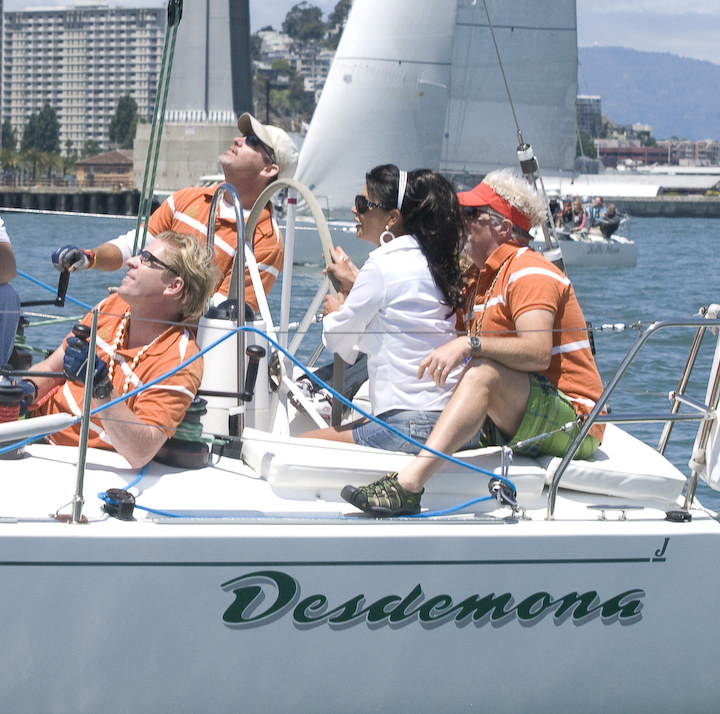
“This was one of the funnest days of my life,” said CBS weather anchor Roberta Gonzales of her day aboard John Wimer’s J/120 Desdemona. (Look for mention of the Media Cup during tonight’s CBS 5 weather broadcast.) The consensus rang true thoughout the après-sail festivities aboard Bay Lady at Pier 40 where contestants and volunteers gathered to enjoy food, a frosty beverage and the after-sail glow. This year, everyone was declared a winner in a 10-way tie. “Next year, it’s game on!” said CBS 5’s Jim Bernard, throwing down the gauntlet to other media to come out and play.
Media Cup organizer Erik Simonson gives special nods of thanks to the San Francisco Giants organization, South Beach YC, South Beach Harbor, all the skippers who volunteered their boats, all the volunteers who helped make the event happen — as well as support from Lucca Ravioli, Half Moon Bay Brewery, Lagunitas Brewery, Sail California, J World, Seashine Boat Cleaning and Detailing, Marine Media Alliance, UK Sailmakers, Skyy Vodka, Dry Creek Wines, Spinnaker Sailing, Pineapple Sails, Comcast Sportsnet. A particular tip of the hat goes to Waypoint Pizza, who delivered hot pizzas to the post-race festivities via a speedy boat ride all the way from Tiburon!
Numbers That Could Save Your Life
With the number of mayday situations we’ve been reporting on recently, we were reminded of an essential resource for Pacific cruisers which was put together by South Pacific cruiser (and once-Whitbread skipper) Ewout Mante of the Elliott 45 Bravado. The document contains local and international telephone numbers, plus some email addresses, for Search and Rescue (SAR) coordination centers in nearly all countries of the Pacific Basin. Ewout made it available to this year’s Pacific Puddle Jump fleet and we have just posted it in PDF format to our Puddle Jump website.
Why would cruisers need phone numbers rather than simply calling via SSB and/or VHF? Because more and more successful rescues these days seem to be instituted by cell or sat phones. And unlike simply receiving an EPIRB position, a live call can not only pinpoint a distressed vessel’s location, but also give would-be rescuers crucial info on the nature of the emergency, injuries to crewmembers and other potentially life-saving details.
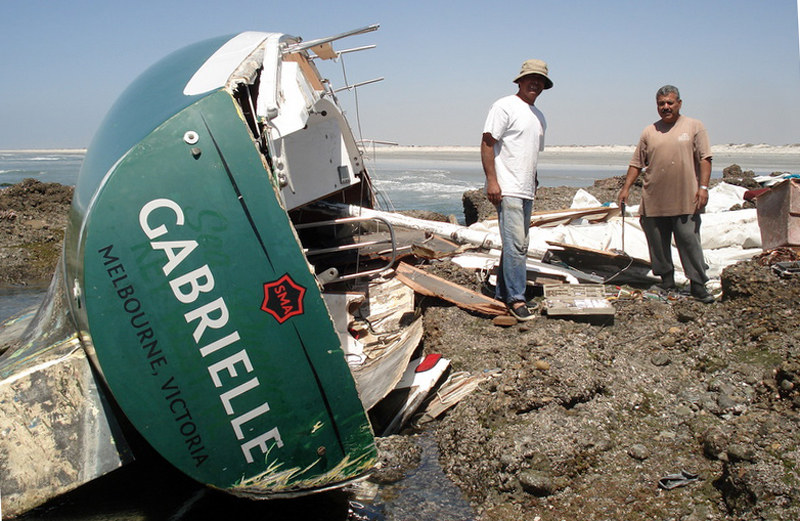
One number that both inshore and offshore sailors should have on their speed-dial list is Coast Guard Alameda: (510) 437-3700. Of course, in a mayday situation 911 would eventually connect you also, but if things get ugly, a few seconds can make a cruicial difference. For those of you currently cruising Mexico or heading there this fall, the Mexican Rescue Coordination Center (RCC) number is (52) 669-985-3078.
We encourage all readers to have a look at this document, then print out a copy to put in a safe spot in your nav station. And thanks again to Ewout for bringing this essential info to our attention. Be safe out there!
Melges 24 Nats Go Down to Wire
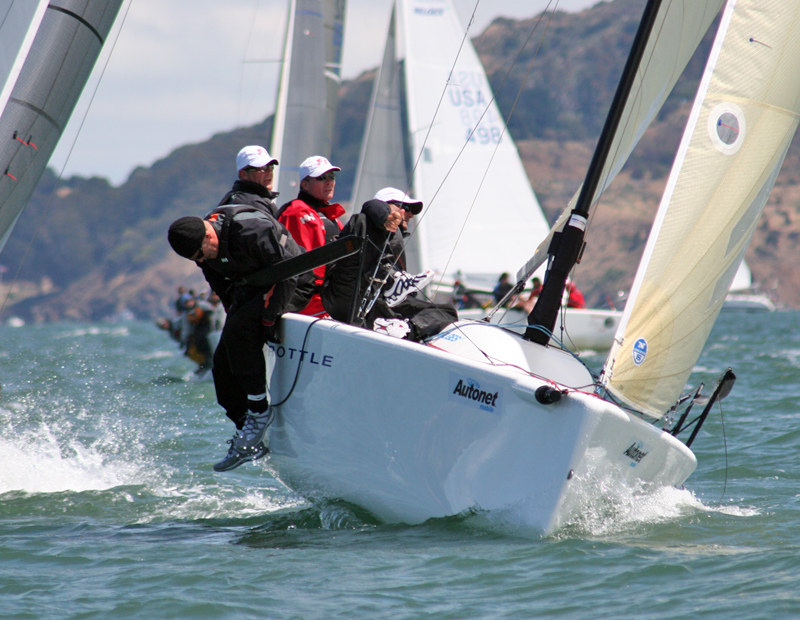
With the 2009 Melges 24 Nationals Trophy on the line, Brian Porter’s Full Throttle was over early at the Alcatraz start for Sunday’s eighth and final race. But the four-time national champions never threw in the towel, and had ground down two-thirds of the 21-boat fleet by the time they reached Crissy Field. As the fleet short-tacked up the Cityfront in a healthy flood, Porter and his crew — brother John, Harry Melges and Andy Burdick — kept grinding away. With Vince Brun’s Bailout and Dave Ullman’s Pegasus 505 sitting 1-2, the Lake Geneva, Wisconsin-based Full Throttle crew knew they had to get up to fourth place to get into a three-way tie for first, which they’d win on the countback. At the first weather mark, they’d worked their way into fifth, but were a good dozen boatlengths behind the fourth place boat.
"We knew we had to get fourth to win, and we just kept working hard," Porter said. "Harry kept putting us in the right spots and going in the right direction. We were fast . . . upwind and down."
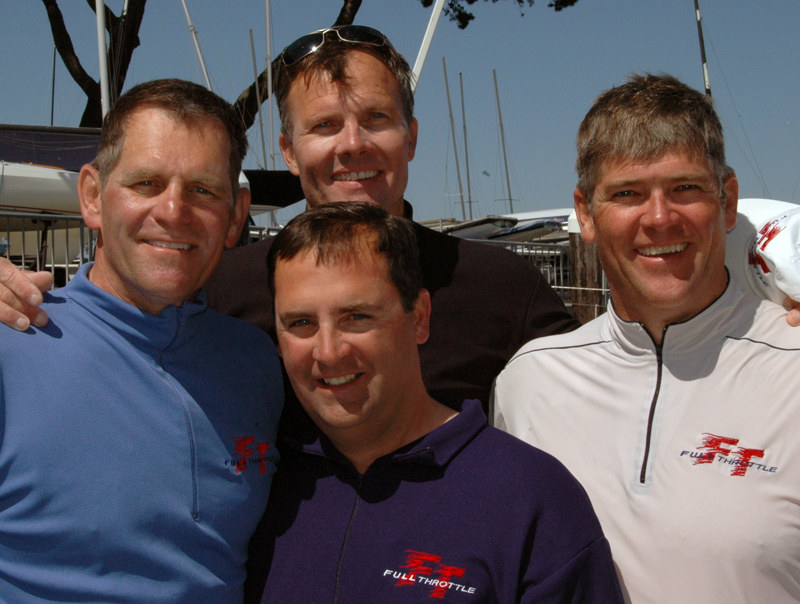
© Latitude 38 Media, LLC
On the first run, Full Throttle made up a lot of time and by the time the peloton was headed back upwind to the finish, Porter and crew were trading tacks with the fourth-place boat — which they passed with 50 yards to spare before the finish off the Presidio. That fourth installed them them into the top-spot for the week, with Brun in second and Ullman in third. Bruce Ayres’ Monsoon — in fourth overall — topped the seven-boat Corinthian Division for non-pro boats. The top local finisher was regatta chair Kristen Lane’s Brick House 623, which vaulted into seventh overall on the strength of a 1-6 final day.
Ready, Tech – Go!
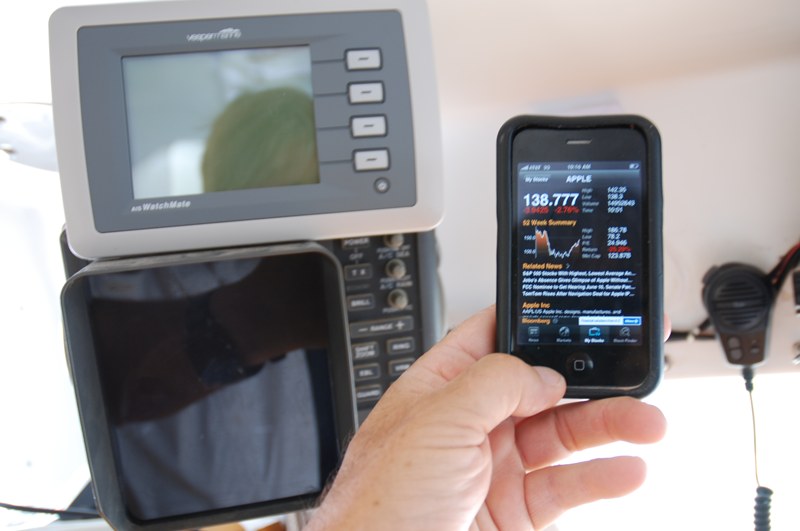
©2009 Latitude 38 Media, LLC
Given the improvements in technology, more sailors than ever are working from their boats, either while at the dock or while cruising far and wide. Naturally, you can’t do this if you’re an airline pilot, restaurant manager or run a day care center. But in some cases it’s possible for headhunters, tech consultants, writers, active investors and others. As we’re in the process of preparing a piece on the topic, we’d love to hear from you. What equipment do you use, and what limitations — financial, geographic and systemic — are you finding?
Currently, the Grand Poobah is doing much of his work aboard the 63-ft catamaran Profligate, now back in California from Mexico. Our tools are an iPhone, an AT&T data card, and an Amazon Kindle.
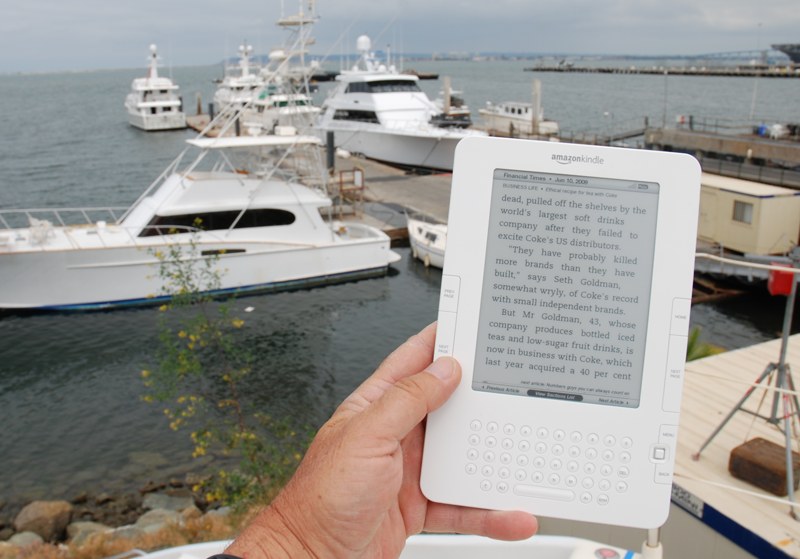
©2009 Latitude 38 Media, LLC
The iPhone gives us phone capability, somewhat useful access to the internet, and countless other features that range from being a waste of time to being very helpful. The AT&T data card gives us surprisingly high-speed internet access on the boat, by which we mean it’s often as fast or faster than the internet connection we have at our office in Mill Valley. To have this capability on the hook, as opposed to having to go ashore or sign up with some wi-fi access system, is wonderful.
The Kindle is a bit of an overlap of both the iPhone and the AT&T data card, but despite being tech gadget skeptics, recommendations from cruisers encouraged us to buy one. We’re glad they did. Thanks to the Kindle, before we roll out of the bunk each morning, we’ve scanned the New York Times and the Los Angeles Times for the left-of-center perspective, and the Wall Street Journal and the Financial Times for the right-of-center perspective. The only downside is that we know these publications automatically download into our Kindle at about 3 a.m., so we’ll often pick the gizmo up in the wee hours and overdose on news before the sun has even come up.
The major limitation to such a system is the range of cell phone coverage. It’s pretty good along the coast of California, but the only places that have coverage in the Channel Islands are Avalon and Two Harbors at Catalina. It’s our understanding that there are cell phone boosters that increase cell phone range up to 25 miles, but we’ve heard conflicting reports about how effective they are and whether they would also work with data cards. We’d love to get some first-hand input. We’d also like to get some input from folks who have used data cards in Mexico. We know that cell phone range is often much greater down there. While doing the Baja Bash a few weeks ago, we sometimes had cell phone coverage 40 miles offshore.
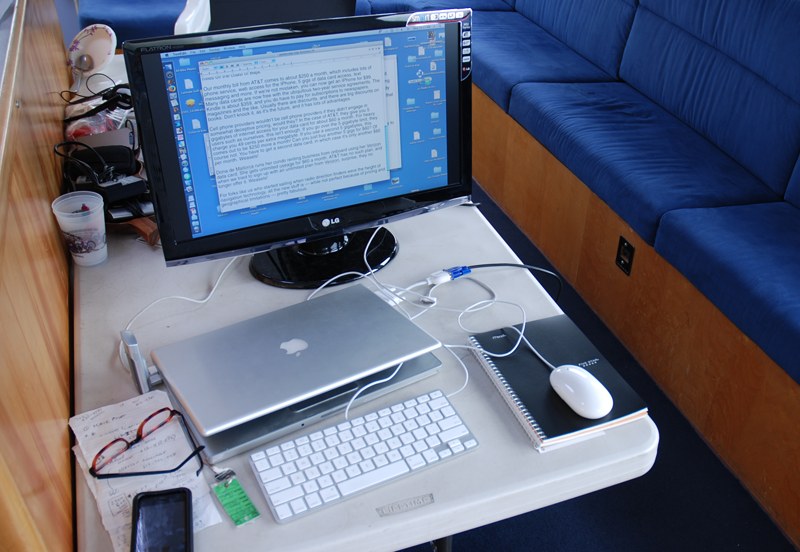
©2009 Latitude 38 Media, LLC
Our monthly bill from AT&T comes to about $250 a month, which includes lots of phone service, web access for the iPhone, five gigs of data card access, text messaging and more. iPhones are now available for as little as $99. Many data cards are now free with the ubiquitous two-year service agreements. The Kindle is about $359, and you do have to pay for subscriptions to newspapers, magazines and the like. Usually there are discounts, and there are major discounts on all books. Don’t knock the Kindle until you’ve tried one. It’s the road to the future and there are more advantages than you think. For example, you can have all your newspapers, books and magazines read to you, in male or female voice, and at whatever speed you’d like.
Cell phone providers wouldn’t be cell phone providers if they didn’t engage in somewhat deceptive pricing, would they? In the case of AT&T, they give you five gigabytes of internet access for your data card for about $60 a month. For heavier users such as ourselves, this isn’t enough. If you go over the five gigabyte limit, they charge you 49 cents per extra megabyte. If you were to use a second 5 gigabytes worth, it would come to $250 more a month! Can you just buy another 5 gigs for $60? Of course not. You have to get a second data card, in which case it’s only another $60 per month. Weasels!
Doña de Mallorca runs her condo rental business from Profligate using her Verizon data card. She gets unlimited useage for $60 a month. AT&T has no such plan, and when we tried to sign up with an unlimited plan from Verizon — surprise, they no longer offer it. Weasels! For what it’s worth, de Mallorca’s Verizon data card is always slower than the AT&T data card, and sometimes cuts out or doesn’t work at all.
For folks like us who started sailing when radio direction finders were the height of onboard technology, all the new stuff — while not perfect because of pricing and geographical limitations — is pretty fabulous.
